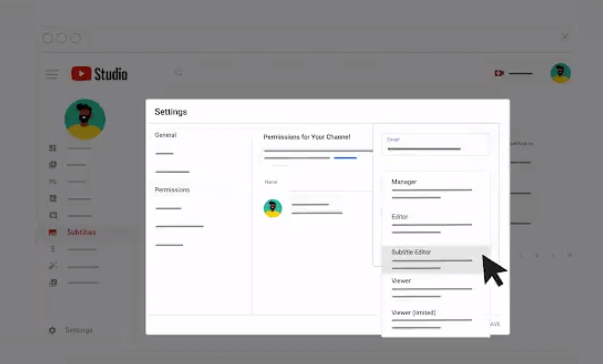Social Media
YouTube and TikTok Add New Options for Automated Captions, Improving Accessibility
- By Brett Belau
13 Apr

YouTube has taken a new step in advancing the use of subtitles in its app, while TikTok is also looking to expand its accessibility features by making auto-subtitles available on all clips.
First off, on YouTube – today, YouTube Chief Product Officer Neal Mohan has announced that creators can more easily outsource the creation and editing of subtitles on their clips within the YouTube Studio app.
Subtitles are key to making content more accessible. So we’ve rolled out a feature that lets @YouTubeCreators delegate the creation & editing of subtitles to 3rd parties securely – hoping this saves creators time & allows even more content to be available to viewers… pic.twitter.com/K75s25EDGT
— Neal Mohan (@nealmohan) April 12, 2022
As you can see here, now, within the ‘Permissions’ element, there’s a new option to add a ‘Subtitles editor’ role within the app, so that you can grant access to a third party to manage subtitles on your clips.
That will help to improve the accuracy and readability of captions on your content. YouTube does, it’s worth noting, also offer automated subtitles on all uploads, but as they are automated, they’re not always accurate, which is especially true for certain languages, and this option will facilitate additional management capacity on this aspect.
TikTok’s also looking to upgrade caption access, and improve usability for more people, by switching English language auto-captions on by default for all uploads.
As you can see in this alert, shared by social media expert Matt Navarra, TikTok’s looking to expand the availability of captions by turning them on by default. Users can still include their own captions, which would negate this step, while they can also turn auto-generated captions off, or change the language display options, within the upload flow.

Though in most cases, you may as well leave them on – and you can edit the auto-captions after they’ve been created, and for most short clips in the app, it’s probably not going to take long to ensure that they’re correct.
In any event, it’ll bring more text options to more TikTok clips, which can only help to improve accessibility, while also helping users viewing in ‘sound off’ environments to get better context as to what your videos are about.
Accessibility has become a key focus for social apps in recent years, with every platform adding more tools and options to help a broader range of users access their content. Which is a positive step, and a significant development for the more than 70 million deaf people worldwide.
Further to this, with more than 80% of deaf people living in developing regions, this is also a critical consideration for apps as they reach new markets, and with both TikTok and YouTube seeing broader adoption around the world, it’s important that each app takes relevant steps to maximize utility.
Source: www.socialmediatoday.com, originally published on 2022-04-12 19:10:46
Connect with B2 Web Studios
Get B2 news, tips and the latest trends on web, mobile and digital marketing
- Appleton/Green Bay (HQ): (920) 358-0305
- Las Vegas, NV (Satellite): (702) 659-7809
- Email Us: [email protected]

© Copyright 2002 – 2022 B2 Web Studios, a division of B2 Computing LLC. All rights reserved. All logos trademarks of their respective owners. Privacy Policy

![How to Successfully Use Social Media: A Small Business Guide for Beginners [Infographic]](https://b2webstudios.com/storage/2023/02/How-to-Successfully-Use-Social-Media-A-Small-Business-Guide-85x70.jpg)



![How to Successfully Use Social Media: A Small Business Guide for Beginners [Infographic]](https://b2webstudios.com/storage/2023/02/How-to-Successfully-Use-Social-Media-A-Small-Business-Guide-300x169.jpg)


Recent Comments